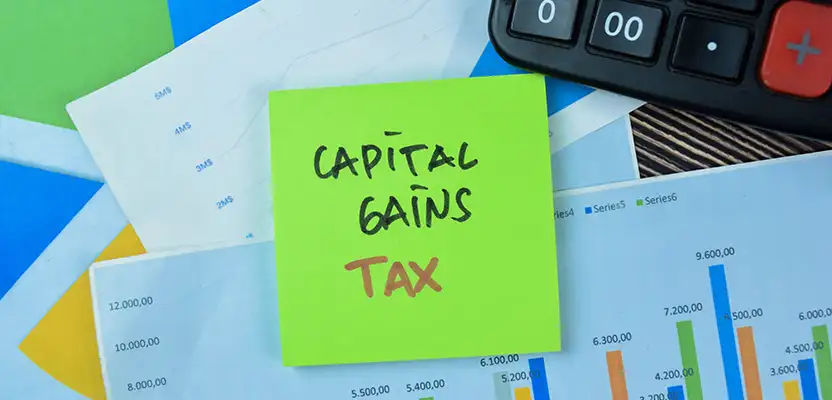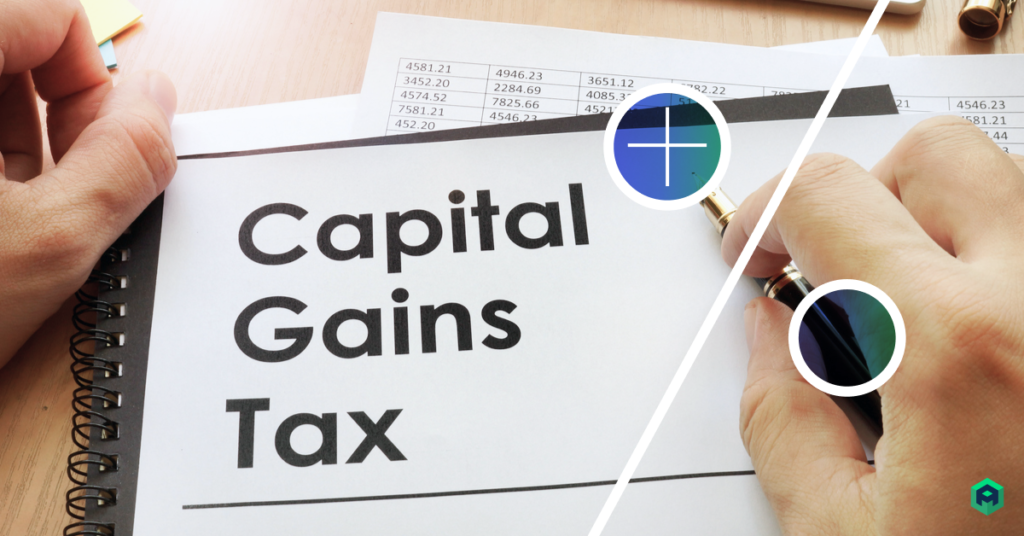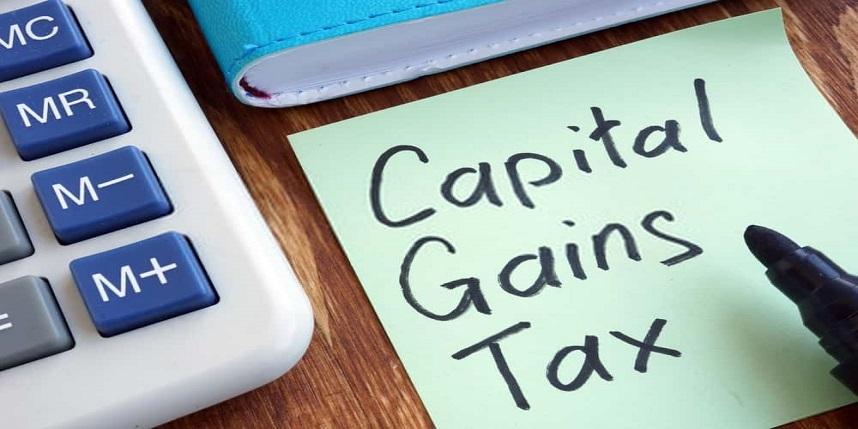To minimize Capital Gains Tax (CGT) in the UK, several strategies can be employed. Firstly, individuals should make use of their annual tax-free allowance, currently set at £12,300 for individuals and £6,150 for trusts. Timing the sale of assets strategically across different tax years can help stay within this threshold.
Utilizing tax-efficient wrappers such as ISAs or SIPPs through strategies like Bed and ISA or Bed and SIPP can shield gains from CGT. Offset losses from other investments against gains to reduce overall CGT liability. Couples can benefit from tax-free transfers between spouses, maximizing the use of the allowance.
Further, managing taxable income and considering potential inheritance tax implications are also crucial aspects to bear in mind. Consulting with a tax advisor can provide tailored advice for effective CGT planning.
What Is Capital Gains Tax?

Capital gains tax (CGT) is a tax imposed on the profits generated from the sale of assets such as property in the UK. Typically, CGT applies when selling a buy-to-let property or a second home. Additionally, individuals may be liable to pay CGT if they utilize a portion of their home for business purposes.
The CGT rates vary depending on the individual’s income level. The basic rate of CGT stands at 18%, while higher and additional rates are set at 28%. Capital gains are considered part of an individual’s overall income for the financial year, thus impacting their income tax liability.
For the 2022-23 tax year, the tax-free allowance for capital gains is £12,300. Any capital gains exceeding this threshold are subject to CGT. For couples, the combined tax-free allowance is £24,600.
How Long Do You Have To Live In A Property To Avoid Cgt?
To avoid Capital Gains Tax (CGT) on a property, you must reside in it as your primary and sole residence throughout the ownership period. This exemption is known as Private Residence Relief (PRR).
According to HMRC guidelines, you qualify for Private Residence Relief (PRR) if you live in the property for the duration of ownership. Additionally, you qualify if you lived in the property for the last nine months of ownership, even if you no longer reside there.
To establish a property as your permanent residence, you typically need to live in it for at least one year. However, certain circumstances may allow for extensions to PRR eligibility:
- If you couldn’t sell your old property within 12 months and remained in it while waiting.
- If you were refurbishing your new residence and occupied the old property for 12 months during this period.
- In cases where you were absent for up to 36 months for valid reasons and returned immediately afterward.
- If your work requires you to be away from home, PRR may be extended for up to 48 months, provided you return afterward.
- For individuals working for overseas companies, PRR may be extended indefinitely if you intend to return unless you permanently settle elsewhere and sell the old property.
It’s important to note that PRR doesn’t apply to commercial properties. This relief is exclusive to residential properties, including multiple residences owned by an individual. If any part of your dwelling is used for profit or business purposes, Private Residence Relief (PRR) won’t apply to that portion. Therefore, no relief will be granted on Capital Gains Tax for that usage.
Who is eligible for the Private Residence Relief?
Private Residence Relief (PRR) is available to individuals who sell their primary residence. Eligibility for PRR extends to:
- Homeowners who possess the freehold of their property.
- Tenants holding leasehold agreements on their primary residence.
- Individuals who jointly own a freehold or leasehold property with another party.
How To Calculate The Relief Amount?

Determining the relief amount for Capital Gains Tax (CGT) on the sale of a property depends on the duration of residence in the property. Here’s an example to illustrate:
Let’s consider a scenario:
- Property purchased for £200,000
- Sold for £300,000 after ten years (120 months), resulting in a taxable gain of £100,000.
- Resided in the property for the first three years, then let it out.
- Private Residence Relief (PRR) applies for the initial three years and the last nine months of ownership.
- PRR covers 45 months (36 months + 9 months), which is 37.5% (45 months divided by the 120 months) of the total ownership period.
- Therefore, the relief amount is calculated as 37.5% of the taxable gain, equating to £37,500.
- The remaining 62.5% of the gain (£62,500) is subject to CGT, as PRR doesn’t cover this portion of the profit.
It’s important to note the changes in PRR eligibility:
- For property sales between April 6, 2014, and April 6, 2020, PRR applied for the last 18 months of ownership.
- However, starting from April 6, 2021, PRR is applicable for the last nine months of ownership.
Understanding these calculations and the applicable PRR rules is crucial for accurately determining CGT liabilities on property sales. Consulting with a tax advisor or accountant can provide further guidance tailored to individual circumstances.
Six Simple And Entirely Legal Strategies To Avoid Capital Gains Tax
To minimize Capital Gains Tax (CGT) legally, taxpayers can employ various strategies and reliefs. However, trying to completely avoid paying capital gains tax is not recommended. Doing so could result in penalties and interest charges if taxes owed are not paid on time. Here are six options investors can consider to manage their CGT liabilities:
Maximize your tax-free allowance
Utilize the full annual tax-free allowance for CGT, which for the 2022-2023 tax year is £3,000. This allowance cannot be carried forward or transferred to a spouse, so it’s beneficial to use it each year. By carefully timing the sale of assets to stay within this threshold, individuals can minimize their CGT liability.
Bed and breakfasting
This strategy involves selling shares before and after the new tax year to crystallize a capital gain while utilizing the tax-free allowance.
By selling shares just before the end of one tax year, investors can realize any gains or losses accrued up to that point. They can then repurchase the shares shortly afterward in the new tax year, effectively resetting the cost basis of their investment. This strategy may help reduce potential future capital gains tax liabilities.
However, it’s essential to be mindful of the 30-day rule, which prevents repurchasing the same shares within that timeframe.
Utilize tax-free wrappers
Transfer investments into tax-efficient accounts such as Individual Savings Accounts (ISAs) or pensions to protect future gains from taxation. This can be achieved through strategies like “bed and Isa” or “bed and pension.” By moving investments into these tax-advantaged accounts, individuals can shield their gains from CGT, allowing for tax-free growth.
Invest in Enterprise Investment Schemes (EIS)
Reinvesting asset gains into EIS offers a potential deferral of CGT until the investment is sold. EIS is a government initiative aimed at helping small businesses raise cash, and investors are rewarded with CGT relief.
However, investors should be cautious, as CGT will be revived upon the sale of the EIS investment, potentially at a higher rate. Additionally, certain qualifying conditions must be met to benefit fully from CGT relief.
Transfer assets to spouse or partner
In most cases, CGT is not payable on gifts to a spouse or civil partner. By transferring assets to a spouse or partner, individuals can effectively utilize their partner’s tax-free allowances, potentially reducing overall CGT liability.
Yet, it’s crucial to be aware of potential tax liabilities if the partner later sells the asset. Furthermore, the transfer should be genuine and not for tax avoidance purposes.
Claim for losses
Capital losses can be used to offset capital gains, reducing overall CGT liability. Any excess losses can be carried forward to future tax years. By strategically realizing losses and offsetting them against gains, investors can minimize their CGT liability over time.
So, it’s important to note that losses must be claimed within the relevant tax year’s deadline to be eligible for offsetting against gains.
FAQ’s
How do I avoid Capital Gains Tax on my property UK?
You can avoid Capital Gains Tax when selling your property in the UK if you meet certain criteria. If you have lived in your home as your main residence for the entire period of ownership and have not let any part of it out, you may qualify for Private Residence Relief, exempting you from Capital Gains Tax.
Which asset is exempt from Capital Gains Tax in the UK?
Certain assets are exempt from Capital Gains Tax in the UK, including gains from ISAs or PEPs, UK government gilts, Premium Bonds, and winnings from betting, lottery, or pools.
What is the tax-free limit for capital gains in the UK?
The tax-free allowance for capital gains in the UK is deducted from your taxable gain before calculating the tax owed. For the 2023 to 2024 tax year, the allowance is £6,000. After deducting this allowance, the remaining gain is added to your taxable income for assessment.
Final Words
Minimizing Capital Gains Tax (CGT) in the UK involves using annual tax-free allowances wisely. It also entails timing asset sales strategically and utilizing tax-efficient wrappers such as ISAs and SIPPs.
Offsetting losses and considering transfers between spouses are also effective strategies. It’s essential to manage taxable income and be mindful of potential inheritance tax implications.
By following these straightforward steps and seeking advice when needed, individuals can effectively minimize their CGT liabilities and optimize their overall financial planning.



